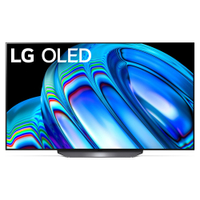OLED, QLED and ULED gaming TV deals that don't suck
These are the best gaming TV deals we've spotted for Prime Early Access.

Taking stock as Amazon Prime Early access comes to a close, it might be a good time to nab a cheap gaming TV so you can rest in the comfort of your living room and play some games. There have been plenty of gaming monitors on offer this Prime Day (Sorry, not Prime Day. There are so many deal events, it hurts my brain). However, deals on gaming TVs that are worth your time are much harder to scout for, especially when sales season rolls around.
That's because so many brands are trying to push smart TVs over high refresh rate ones and QLED TVs over OLED ones. ULED and WOLED are even a thing now, and it's easy to see how one might get overwhelmed with all the options. The main thing gamers should be concerned with is a high refresh rate, especially if you've bagged one of the best gaming PC deals we've seen floating around over Prime Early Access. Ideally, for a 4K television, 120Hz is the bar set for PC gaming.
To that effect, I've collated all the best gaming TV deals here so you don't have to go on the hunt and can get back to deciding how you're going to make your rig into a monster with the best graphics card deals around today, and moreover make the most of a speedy, high-resolution gaming TV.
- All the Amazon Prime Early Access PC gaming deals around right now
- The best Prime Early Access gaming monitor deals
In case you're wondering OLEDs are panels that create their own light by applying electrical current to a series of thin organic films composed of carbon and hydrogen placed between two conductors. This makes every pixel in an OLED display a light source, which eliminates much of the complexity in competing LCD screens.
WOLED, or White OLED, can be a bit of a mixed bag. Thanks to the white backlight, they can pacify colors and sometimes not have blacks as deep. In saying that, LG has already been using WOLED tech for many of its TVs, and they tend to be great for deep blacks and HDR as far as we've seen.
QLED, on the other hand, is a Samsung own brand panel tech and means quantum dot light-emitting diode. Using a metallic quantum dot filter, they can improve color and contrast. And they're usually pretty impressive when it comes to gaming in HDR. That's maybe not something PC gamers will necessarily be interested in, but those with the latest consoles might find them useful.
ULED is also known as Ultra LED, and it's essentially a Hisense patent that isn't a "single technology" like OLED or QLED. Instead, it's all about branding a collection of bells and whistles on the company's LED TVs under one banner. A little misleading, perhaps, but that's why we're here.
Either way, if you're looking at 4K TVs, you'll want a graphics card that has at least an HDMI 2.0 port (HDMI 2.0a or later for HDR10 displays). That allows for 4K at 60Hz, with 24-bit color. Newer TVs support HDMI 2.1, which will handle 4K at 120Hz and 8K at 60Hz, providing your computer also supports HDMI 2.1.
Cheap Prime gaming TV deals
Hisense U7G Quantum Series| 65-inch | 4K | ULED | 120Hz | $899.99 $699.99 at Best Buy (save $200)
Hisense makes a surprisingly good (and quite large) gaming TV for under $1,000. It supports 120Hz, so you can plug in your PlayStation 5, Xbox Series, and high-end PC and get the most out of your hardware. The one catch is that there are only two HDMI 2.1 ports. We can't have it all, can we?
TCL 6-Series Roku TV| 65-inch | 4K | QLED | 120Hz | $1499.99 $949.99 at Amazon (save $550)
The TCL 6-Series QLED TV is a fantastic large TV at a great price. This TV offers a really good gaming performance. The Roku integration means you'll have your choice of a dizzying amount of streaming apps at your disposal.
LG OLED55B2PUA| 55-inch | 4K | OLED | 120Hz | $1,599.99 $976.99 at Walmart (save $623)
A fantastic OLED offering here for gamers, with deep blacks, HDMI 2.1 and all the VRR options you could handle. This ones got a great low input lag, and is topped with a nifty 120Hz refresh rate. Sure, there are higher refresh rate monitors but, a 55-inch gaming OLED sounds pretty great as a giant second monitor for that price.
Keep up to date with the most important stories and the best deals, as picked by the PC Gamer team.

Screw sports, Katie would rather watch Intel, AMD and Nvidia go at it. Having been obsessed with computers and graphics for three long decades, she took Game Art and Design up to Masters level at uni, and has been rambling about games, tech and science—rather sarcastically—for four years since. She can be found admiring technological advancements, scrambling for scintillating Raspberry Pi projects, preaching cybersecurity awareness, sighing over semiconductors, and gawping at the latest GPU upgrades. Right now she's waiting patiently for her chance to upload her consciousness into the cloud.




